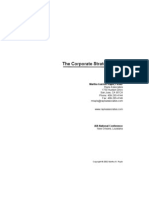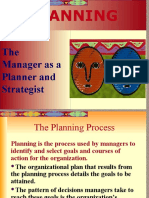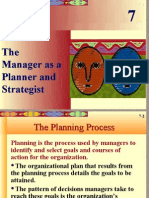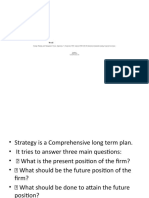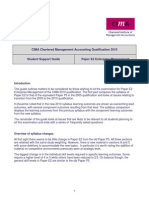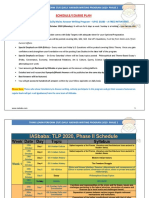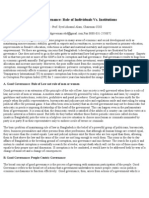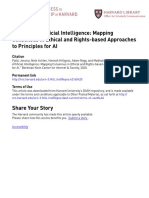0% found this document useful (0 votes)
37 views6 pagesModule 10-11
The document outlines the processes of strategic planning and strategy implementation, highlighting key components such as mission and vision, environmental scanning, and goal setting. It emphasizes the importance of organizational design, corporate governance, and culture in achieving competitive advantage and effective execution of strategies. Additionally, it discusses the use of evaluation and control systems, including the Balanced Scorecard, to monitor performance and align organizational activities with strategic objectives.
Uploaded by
kanupriya.ipu201104Copyright
© © All Rights Reserved
We take content rights seriously. If you suspect this is your content, claim it here.
Available Formats
Download as PDF, TXT or read online on Scribd
0% found this document useful (0 votes)
37 views6 pagesModule 10-11
The document outlines the processes of strategic planning and strategy implementation, highlighting key components such as mission and vision, environmental scanning, and goal setting. It emphasizes the importance of organizational design, corporate governance, and culture in achieving competitive advantage and effective execution of strategies. Additionally, it discusses the use of evaluation and control systems, including the Balanced Scorecard, to monitor performance and align organizational activities with strategic objectives.
Uploaded by
kanupriya.ipu201104Copyright
© © All Rights Reserved
We take content rights seriously. If you suspect this is your content, claim it here.
Available Formats
Download as PDF, TXT or read online on Scribd
/ 6
















